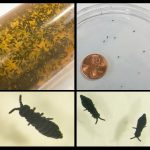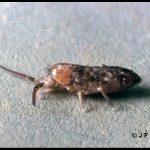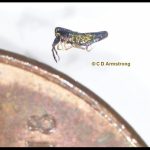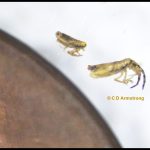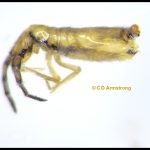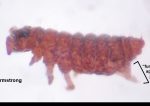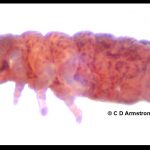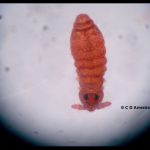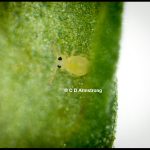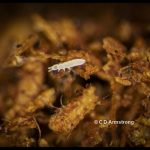Springtails
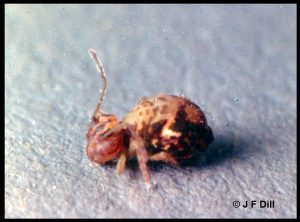
Springtails (Class: Collembola) are peculiar, but generally harmless creatures that people may recognize by another common name–Snowfleas or ‘snow fleas’–used to describe some dark-colored and jumping species, such as Hypogastrura nivicola. Snowfleas are easy to see when they end up in large aggregations on top of snow-covered areas in late winter or early spring. Most species of Collembola possess a special forked appendage called a furcula that enables them to jump, which is the reason for the vernacular name, springtails. They are no longer regarded as insects, largely because of the fact that–unlike insects–they have internal rather than external mouthparts. Having internal mouthparts renders them incapable of biting, and so unlike fleas (for which they are sometimes mistaken due largely to their jumping), they are not blood-feeders.
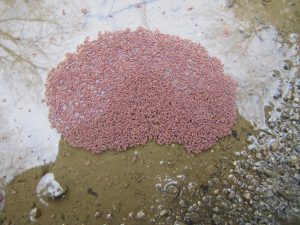
Springtails are very minute in size; commonly 1/8th to as small as 1/16th inch in length. Most are either dark-colored, brown, grey or black but some species are white, or even iridescent and brightly colored such as the red species that are pictured here. Springtails require damp conditions to survive, and may be found in a large number of habitats, especially soil. Other habitats include leaf litter, rotting wood, caves, shorelines, organic debris, under bark, or even indoors in moist locations such as the soil of potted plants. People may also find them in their basements, or outside covering portions of foundations or sidewalks.
Springtails are considered beneficial because of their important role as decomposers, since they are omnivore feeders that will feed on fungi, pollen, algae, and decaying animal and plant organic matter.
Additional Photos:
- Springtails (Hypogastrura nivicola / Snowfleas) (Howland, ME; found on the ground and on the side of a shed on 4/21/2022)
- Closeup of a Springtail
- Example of an elongate-bodied springtail (Order Entomobryomorpha) (perhaps genus Lepidocyrtus)
- Elongate-bodied springtails (Order Entomobryomorpha) beside a portion of a US penny.
- Example of an elongate-bodied springtail (Order Entomobryomorpha)
- Closeup image of a Sprintail
- A species of globular springtail (Family Bourletiellidae) on a phlox leaf (Orono, ME; 5/9/2023)
- Springtail (Order Poduromorpha; either Family Tullbergiidae or Onychiuridae) (in potting soil; 7/19/2023)
Other Notes of interest:
- There are over 8,200 described species of Collembola worldwide.
- Although springtails, like insects, belong to the subphylum Hexapoda–derived from the Greek for having six legs–they are no longer considered insects, in part because they have internal mouthparts whereas insects have external mouthparts.
- Springtails are probably the most abundant hexapods on Earth, with up to 250,000,000 individuals per acre, and they occur throughout the world; even in Antarctica.
Additional Information:
- Springtails (University of Minnesota Extension)
- Springtails (NC State Agriculture & Life Sciences)
- Springtails Management Guidelines (Part of the University of California’s Statewide IPM Program)
- Additional examples of Springtails at BugGuide.net

